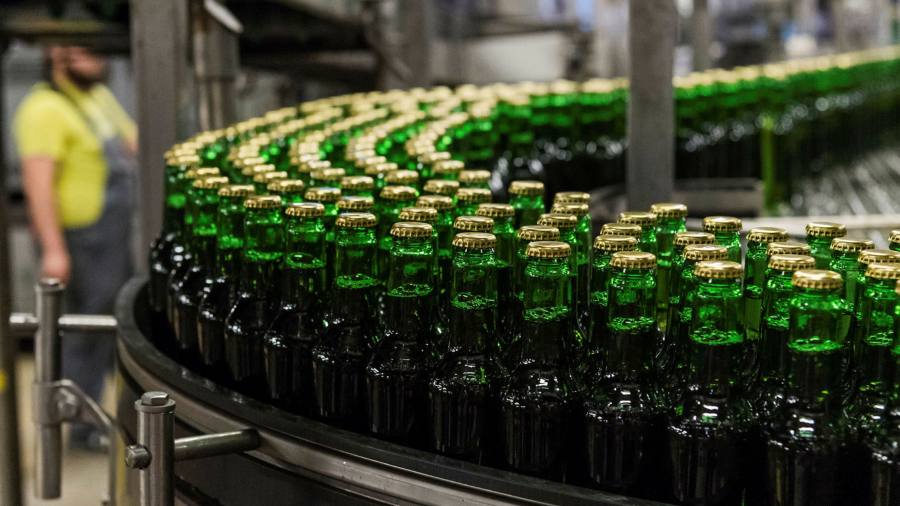[ad_1]
There is a mini-panic spreading about shortfalls all along the supply chain for manufactured goods, and how these somehow predict a commodities boom. At the beginning of this week, the ISM Manufacturing survey reported “depleted†supply chains, “increased lead times for deliveries†and “widescale shortagesâ€.
And the survey’s respondents are supposed to be steady handed supply chain professionals. The investing public, with too much time, stale cash deposits and bandwidth on its hands has responded through its online trading accounts.
Thanks in part to people who heard the term supply chain for the first time last year, net non-commercial long positions in Comex copper were up to 75,000 contracts in recent days, close to December’s all-time high of 80,000 contracts.
Not surprisingly, the Twitterverse is agog with “commodities supercycle†talk. But we still have continued high unemployment, low wages, vaccine delays and declining bank credit.
Yes, since its post-Covid economic reopening China increased its imports of basic materials by 40 per cent. But that surge is not going to be repeated given a planned growth rate of 6 per cent.
So what can account for the desperation along the goods supply chain? I believe it is the whiplash effect of the depletion of retail inventories during the lockdowns at the beginning of the pandemic. In the world of operations management, ie the systematic analysis of production and distribution chains, this is also called the Beer Game Effect.
The Beer Distribution Game is a classroom exercise invented by Jay Forrester of MIT’s Sloan School in the late 1950s to simulate the dynamics of a production-distribution system using (conceptual) cases of beer as the product. The standard version of the game was codified by another Sloan School professor, John Sterman, in a 1989 paper on “Misperceptions in Dynamic Decision Makingâ€.
Game participants play the parts of retailer, wholesaler, distributor and factory manager. The objective is to ensure that consumer demand for beer can be met directly, or with as little delay as possible, while each player attempts to keep inventory as low as possible. Each cycle played is counted as a “weekâ€. Running out of a case of beer costs twice as much as carrying the case in inventory. Of course: without supply you anger your customers and maybe lose their future orders.
The only unknown in each cycle is consumer demand, set by the professor/organiser. The game typically starts out with a steady state of end-demand, say four cases of beer. The organiser then bumps up that retail demand to eight cases. In response, says Sterman: “They always overshoot. If the retailer increases their order to eight cases, the wholesaler increases their order to 40 cases, then the distributor sends an order for 100 cases to the factory-player.
“It’s because people are myopic and don’t think about the system as a whole. People are uncomfortable with delay, and do not sufficiently take into account time delays and their own prior orders.â€
At each stage the back orders and lags compound in what operations research formally calls “oscillation, amplification and phase lagâ€. Informally, it is sometimes called the bullwhip effect.
Years of globalisation and just-in-time ordering management had ironed out bullwhip effects across the world’s manufacturers. The Covid-19 shutdowns and restarts of production changes disorientated supply chain managers, who responded to initial post-reopening shortages by double-ordering and overstocking supplies.
These actions are now echoing down from retail stores to basic materials and producers of sub-assemblies such as semiconductor chips. Ominously, White House deputies and European commissioners have involved themselves in solving the bullwhip effect on critical supply chains. Those interventions, called adding stage gates in operations management, make matters worse for a while.
And speaking of the ISM, its subsequent report this week on non- manufacturing sentiment showed that 19 per cent of respondents reported inventories as too high, up from 10 per cent in December.
David Rosenberg, financial economist and president of Toronto’s Rosenberg Research, asks: “Where is the wage boom and full employment? Once the stimulus runs out in two quarters, we are facing a fiscal cliff unless private demand is up by 10 per cent next year. This is all temporary.â€
If so, one should not buy “supercycle†commodities, but Treasury
yield while it is still there.
[ad_2]
Source link






